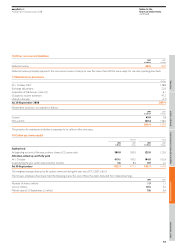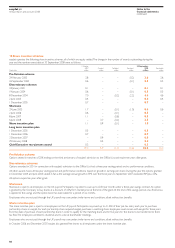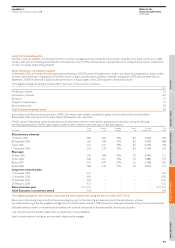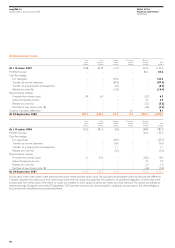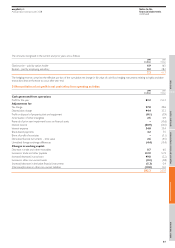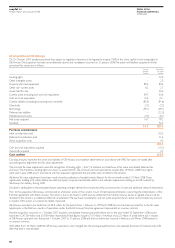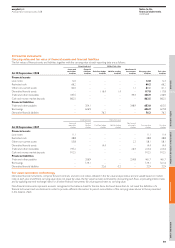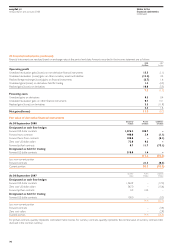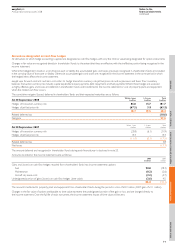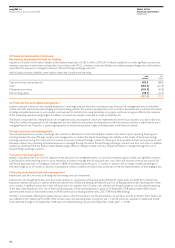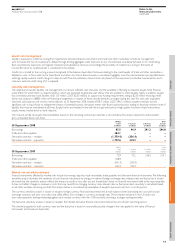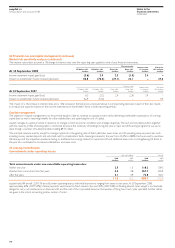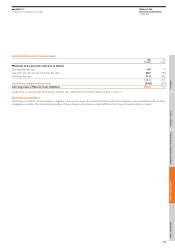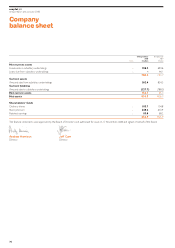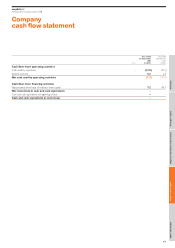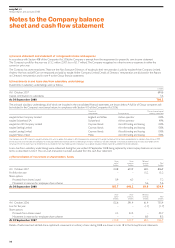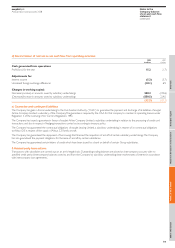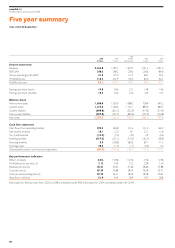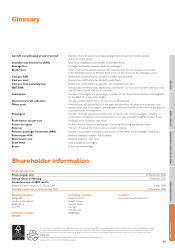EasyJet 2008 Annual Report Download - page 75
Download and view the complete annual report
Please find page 75 of the 2008 EasyJet annual report below. You can navigate through the pages in the report by either clicking on the pages listed below, or by using the keyword search tool below to find specific information within the annual report.
easyJet plc
Annual report and accounts 2008
Notes to the
financial statements
continued
Credit risk management
easyJet is exposed to credit risk arising from liquid funds, derivative financial instruments and trade and other receivables. Credit risk management
aims to reduce the risk of counterparty default through limiting aggregate credit exposure to any one individual counterparty, based on its credit rating.
Such counterparty exposures are regularly reviewed and adjusted as necessary. Accordingly, the possibility of material loss arising in the event of
non-performance by counterparties is considered to be unlikely.
Credit risk is limited to the carrying amount recognised at the balance sheet date. Disclosure relating to the credit quality of trade and other receivables is
detailed in note 12. The credit risk for liquid funds and other short-term financial assets is considered negligible, since the counterparties are reputable banks
with high quality external credit ratings. For deposits with financial institutions, internal limits are placed on the exposure to individual counterparties and a
minimum external credit rating of A is required.
Liquidity risk management
The objective of easyJet’s liquidity risk management is to ensure sufficient cash resources and the availability of funding as required. easyJet holds financial
assets either for which there is a liquid market or which are expected to generate cash inflows that are available to meet liquidity needs. In addition, easyJet
has committed undrawn bank facilities of $1,135 million (2007: $250 million) to support any funding requirements, being a $250 million revolving credit
facility and a balance of $885 million of financing arrangements in respect of future aircraft deliveries, arranged during the year. The cash, cash equivalent,
restricted cash balances and money market deposits at 30 September 2008 totalled £928.7 million (2007: £961.3 million). easyJet continues to hold
significant cash or liquid funds to mitigate the impact of potential business disruption events with Board approved policy stating an absolute minimum level of
liquidity that must be maintained at all times. Surplus funds are invested, in line with Board approved policy, in high quality short-term liquid instruments,
usually money market funds or bank deposits.
The maturity profile of easyJet’s financial liabilities based on the remaining contractual maturities is set out below. The analysis represents undiscounted
gross anticipated future cash flows.
Within Over
1 year 1–2 years 2–5 years 5 years
30 September 2008 £million £million £million £million
Borrowings 85.5 96.9 291.2 296.0
Trade and other payables 304.1–––
Derivative contracts – receipts (1,759.9) (336.9) – –
Derivative contracts – payments 1,729.6 310.3 – –
Within Over
1 year 1–2 years 2–5 years 5 years
30 September 2007 £million £million £million £million
Borrowings 73.9 73.2 246.3 310.1
Trade and other payables 206.9–––
Derivative contracts – receipts (641.3) (200.4) – –
Derivative contracts – payments 642.4 204.3 – –
Market risk sensitivity analysis
Financial instruments affected by market risks include borrowings, deposits, trade receivables, trade payables and derivative financial instruments. The following
sensitivity analysis illustrates the sensitivity of such financial instruments to changes in relevant foreign exchange rates, interest rates and fuel prices. It should
be noted that the sensitivity analysis reflects the impact on profit or loss after tax and shareholders’ funds on financial instruments held at the reporting date.
It does not reflect changes in revenue or costs that may result from changing currency rates, interest rates or fuel prices. Each sensitivity is calculated based
on all other variables remaining constant. The analysis below is considered representative of easyJet’s exposure over the 12 month period.
The currency sensitivity analysis is based on easyJet’s foreign currency financial instruments held at each balance sheet date taking into account forward
exchange contracts and zero cost collars that offset effects from changes in currency exchange rates. The increased sensitivity in the US dollar and
euro rate represents sterling weakening against each variable currency with the –10% sensitivity showing a stronger sterling sensitivity.
The fuel price sensitivity analysis is based on easyJet’s fuel related derivative financial instruments held at the end of each reporting period.
The sensitivity applied to both currency rates and the fuel price is based on reasonably possible change in the rate applied to the value of financial
instruments at the balance sheet date.
73
OverviewDirectors’ reportReport on Directors’ remunerationFinancial informationOther information


